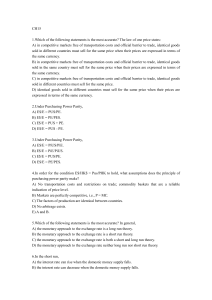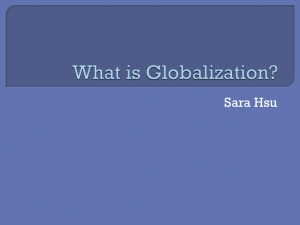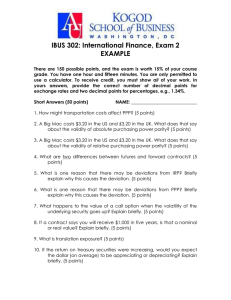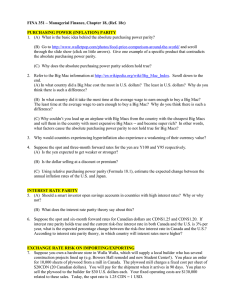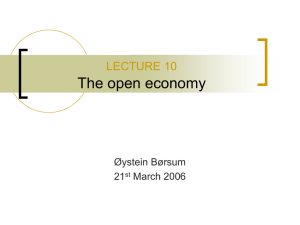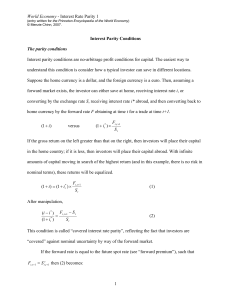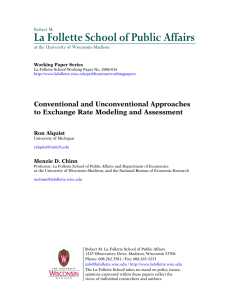Lecture 9 ECON 5327-01
advertisement
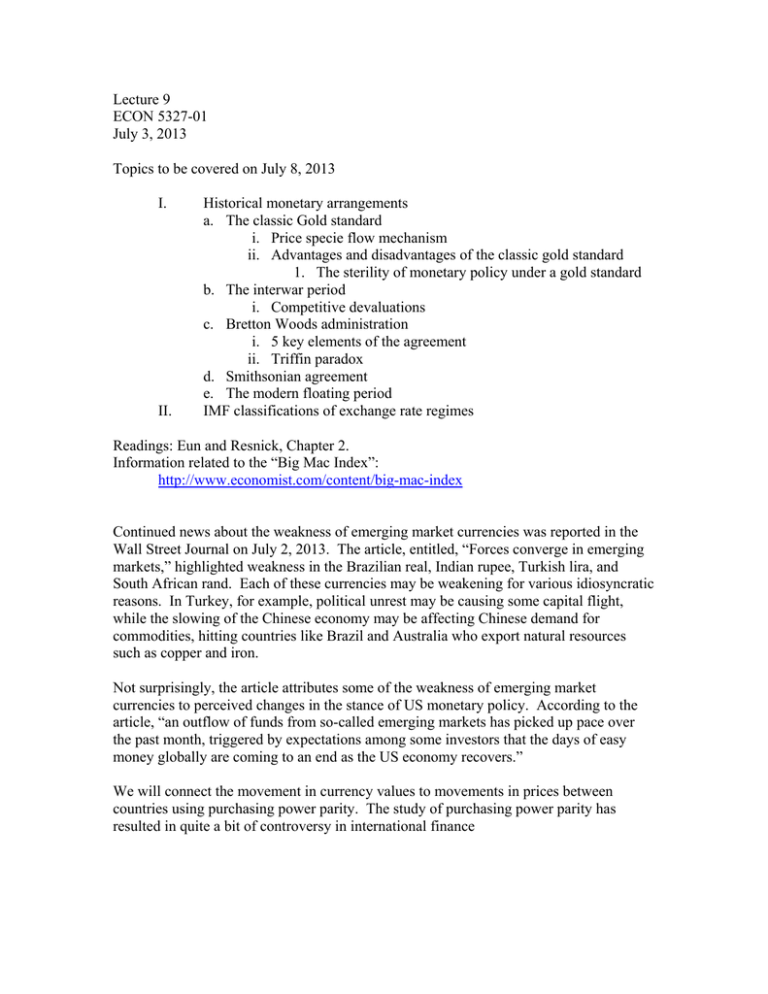
Lecture 9 ECON 5327-01 July 3, 2013 Topics to be covered on July 8, 2013 I. II. Historical monetary arrangements a. The classic Gold standard i. Price specie flow mechanism ii. Advantages and disadvantages of the classic gold standard 1. The sterility of monetary policy under a gold standard b. The interwar period i. Competitive devaluations c. Bretton Woods administration i. 5 key elements of the agreement ii. Triffin paradox d. Smithsonian agreement e. The modern floating period IMF classifications of exchange rate regimes Readings: Eun and Resnick, Chapter 2. Information related to the “Big Mac Index”: http://www.economist.com/content/big-mac-index Continued news about the weakness of emerging market currencies was reported in the Wall Street Journal on July 2, 2013. The article, entitled, “Forces converge in emerging markets,” highlighted weakness in the Brazilian real, Indian rupee, Turkish lira, and South African rand. Each of these currencies may be weakening for various idiosyncratic reasons. In Turkey, for example, political unrest may be causing some capital flight, while the slowing of the Chinese economy may be affecting Chinese demand for commodities, hitting countries like Brazil and Australia who export natural resources such as copper and iron. Not surprisingly, the article attributes some of the weakness of emerging market currencies to perceived changes in the stance of US monetary policy. According to the article, “an outflow of funds from so-called emerging markets has picked up pace over the past month, triggered by expectations among some investors that the days of easy money globally are coming to an end as the US economy recovers.” We will connect the movement in currency values to movements in prices between countries using purchasing power parity. The study of purchasing power parity has resulted in quite a bit of controversy in international finance Outline for July 3, 2013 I. Purchasing power parity continued a. The law of one price b. Absolute purchasing power parity i. Reasons purchasing power parity may fail to hold c. Relative purchasing power parity d. The real exchange rate i. Example: The case of Mexico II. Introduction to the history of monetary arrangements a. The classic Gold standard b. The interwar period c. Bretton Woods administration e. Smithsonian agreement f. The modern floating period i. Jamaica agreement (1976) ii. Plaza Accord (1985) iii. Louvre Accord (1987) iv. The launching of the euro (1999) Review Questions: Please review the questions from lecture 8. We didn’t cover the material related to that question until class on Wednesday, July 3.


